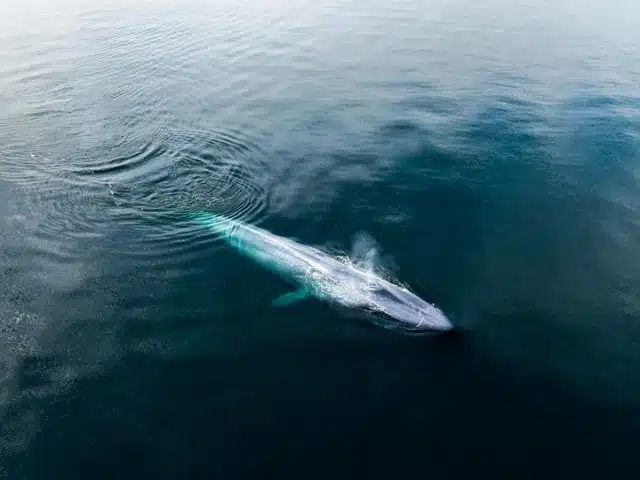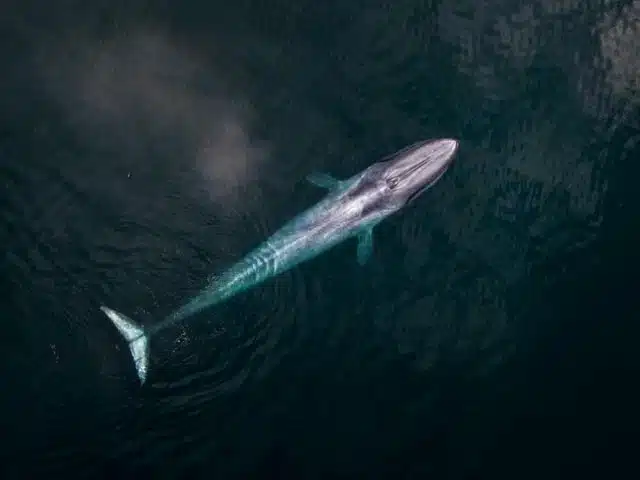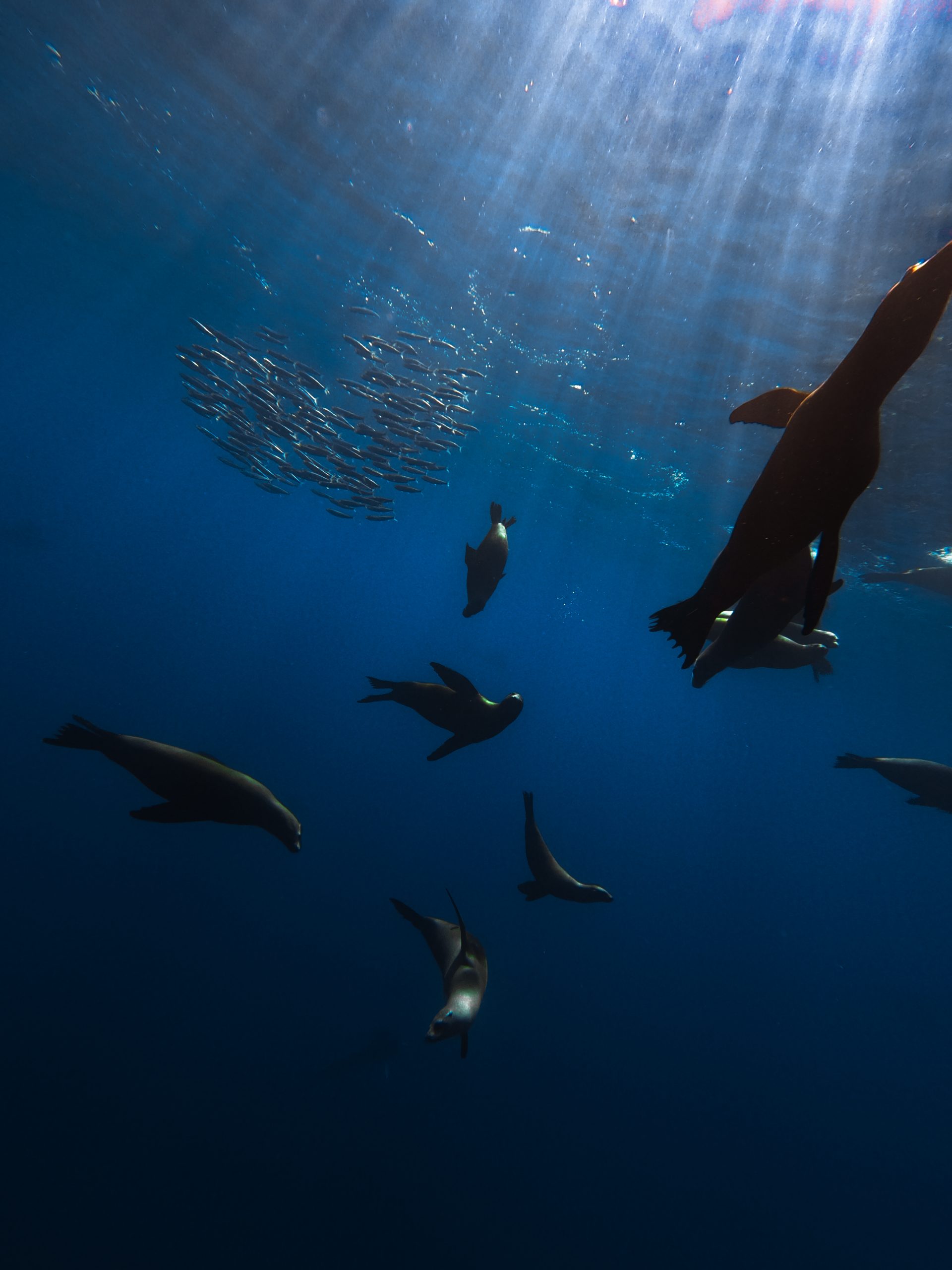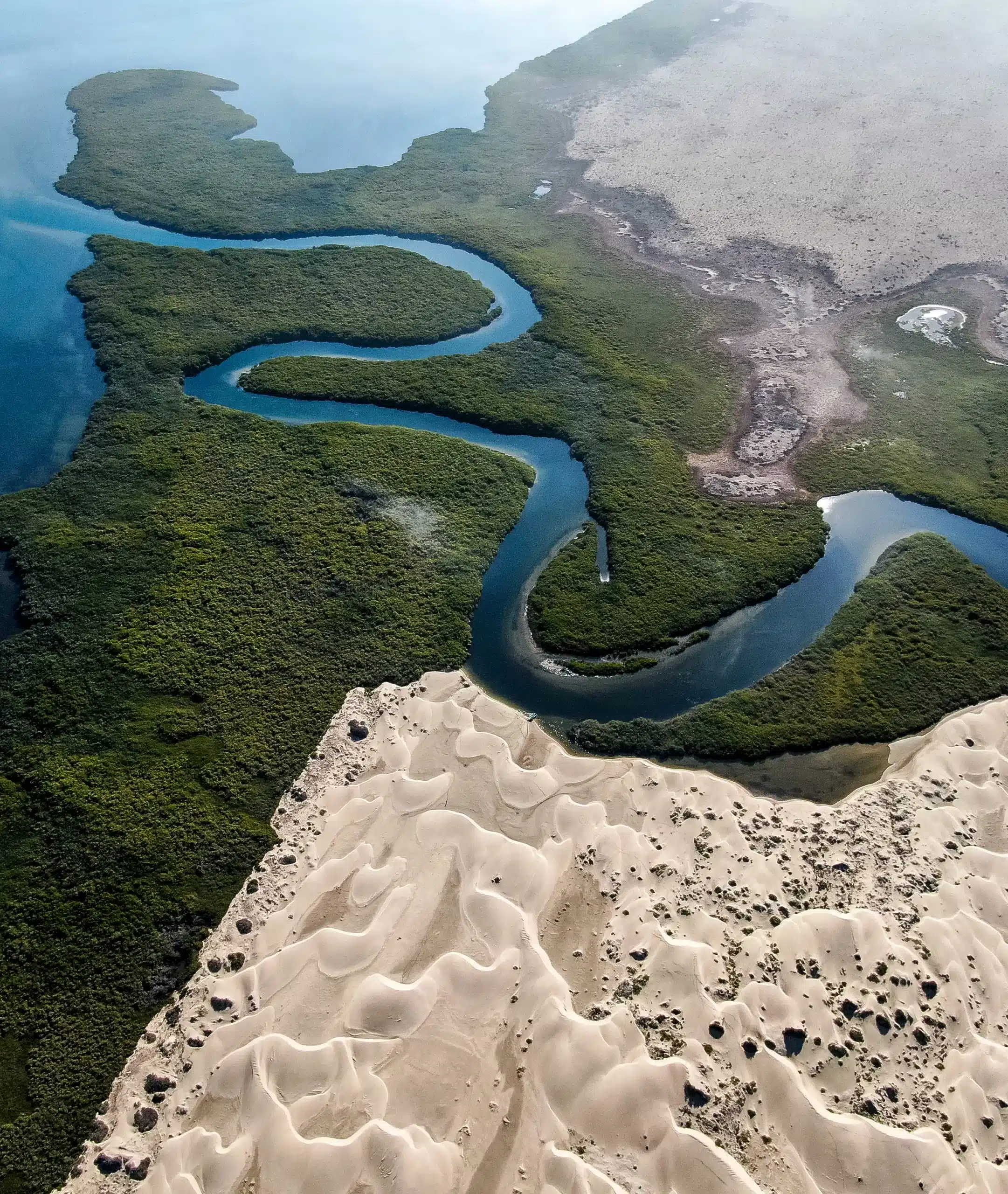Sperm whales (Physeter macrocephalus) are among the most fascinating marine mammals, renowned for their deep-diving abilities, massive heads, and complex social behaviors. Known as the deepest-diving whales in the world, they can plunge to depths of over 3,000 feet in search of their favorite prey—giant squid. Found in the deeper waters off the coast of Baja California Sur, these elusive giants are a remarkable sight for whale-watching enthusiasts.
If you’re intrigued by the ocean’s largest giants, don’t miss our blog on “Blue Whales Interesting Facts: The Loudest, Biggest, and Most Elusive Giant of the Ocean” to learn more about the largest animal ever to exist.
THE DEEP DIVERS OF THE OCEAN
Sperm whales are expert hunters, capable of holding their breath for up to 90 minutes while navigating the dark ocean depths. Their dives often reach depths of 3,000 feet, with some recorded dives going even deeper in pursuit of giant and colossal squid. The Sea of Cortez, with its nutrient-rich waters and deep underwater canyons, offers a prime habitat for these skilled hunters.
FASCINATING FACTS ABOUT SPERM WHALES
1. LARGEST NOSE IN THE ANIMAL KINGDOM
The sperm whale’s massive head houses the spermaceti organ, capable of holding up to 1,900 liters (500 gallons) of a wax-like substance. This organ is critical for buoyancy control and echolocation, allowing sperm whales to dive to incredible depths and hunt with precision.
Why the Name “Sperm Whale”? Early whalers mistakenly believed that the spermaceti contained in the whale’s head was sperm, leading to the species being called “sperm whales.” This unique organ not only aids in deep-sea hunting but also highlights their evolutionary adaptation to life in the ocean’s abyss.
2. LARGEST BRAIN ON EARTH
Sperm whales have the largest brain of any living animal, weighing up to 4.2 kilograms (9.2 pounds). Their intelligence is reflected in their complex social structures, problem-solving skills, and sophisticated vocalizations. Sperm whales exhibit strong familial bonds within matriarchal pods, where females and their young form tight-knit social groups.
3. LANGUAGE AND COMMUNICATION: THE POWER OF CLICKS
Sperm whales communicate through a series of powerful clicking sounds, known as codas, which serve as their primary mode of communication and navigation. These clicks are the loudest sounds produced by any animal, reaching up to 230 decibels—louder than a jet engine. Scientists believe their communication is incredibly complex, with different pods having distinct dialects and even cultural traditions.
Juvenile Learning Curve: Young sperm whales, or calves, take about two years to master their vocalizations. During this time, they emit “babbling” clicks, similar to human babies learning to speak.
4. ADAPTATION AND STRATEGY
Historical records from the 1900s reveal the sperm whale’s capacity for strategic thinking. As whalers intensified hunting efforts, researchers noticed a significant drop in mortality rates among sperm whales. It’s believed that these whales adapted their behavior, using their communication skills to warn other pods and avoid hunters—an extraordinary example of social intelligence.
SPERM WHALE LIFESTYLE AND ECOLOGY
SQUIRREL HUNTERS OF THE DEEP
Sperm whales are apex predators, primarily feeding on giant and colossal squid. Consuming up to one ton of prey daily, they rely on echolocation to detect their prey in the pitch-black depths. Their conical teeth make them formidable hunters, perfectly adapted for deep-sea predation.
SOCIAL CREATURES
Sperm whales live in close-knit matriarchal pods, where females and their calves form strong social bonds. Males, on the other hand, tend to lead more solitary lives, venturing into deeper waters and occasionally forming small bachelor groups. During mating seasons, males may join larger pods, demonstrating their social flexibility.
LONG LIFESPAN
Sperm whales can live up to 70 years, spending much of their lives migrating across vast ocean expanses. Their routes often span tropical and polar regions, guided by food availability and breeding patterns.
SPERM WHALE CALVES: THE LONGEST NURSING PERIOD AMONG WHALES
Sperm whale calves are born after a 14-16 month gestation period, measuring between 12 to 14 feet long and weighing approximately one ton at birth. Calves have one of the longest nursing periods among cetaceans, staying with their mothers for up to two years. During this time, they learn essential survival skills, such as deep diving and echolocation, while remaining within the safety of their pod.
EXPERIENCE SPERM WHALES WITH IN CABO TRAVEL
While spotting sperm whales can be more elusive compared to other species, encountering these deep-diving giants is a truly once-in-a-lifetime experience. At In Cabo Travel, we offer tailored WHALE WATCHING tours designed to maximize your chances of witnessing sperm whales in their natural habitat.
Unlike other whale species, sperm whales do not follow a strict migratory schedule, making sightings possible year-round. However, winter months tend to offer higher chances of spotting them, particularly around La Ventana and Santa Rosalía, where deep underwater canyons create ideal hunting grounds for giant squid.
BOOK YOUR SPERM WHALE WATCHING ADVENTURE TODAY
Immerse yourself in the captivating world of Baja’s deep-diving giants. Witness the intelligence, power, and beauty of sperm whales up close with In Cabo Travel.
BOOK NOW and embark on a marine adventure you’ll never forget.












